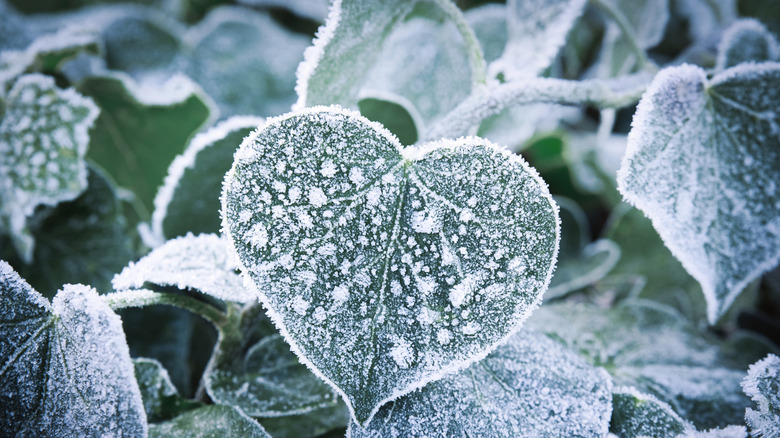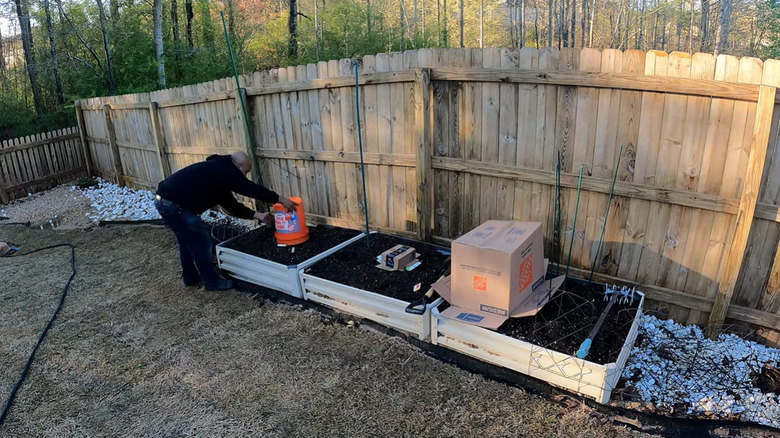How To Reuse Cardboard Boxes To Protect Your Garden Plants During Winter
As temperatures drop, your anxiety can rise as you worry about your outdoor plants. Many plants don't do well with snow and ice, but luckily, there are steps you can take to protect them. Even better, the material you need may already be in your garage or stuffed in a closet. As deliveries arrive from Amazon and other places, it's worth saving those cardboard boxes. They can be a lifesaver for your plants when cold weather moves in. Creating a barrier of warmer air around your plants helps prevent freezing. Corrugated cardboard is especially suited for protecting plants, as the layers allow air flow while still insulating your plants from the freezing temperatures.
The water inside plant cells contains sugars and other nutrients, giving it a lower freezing temperature than the water outside the cells. But this causes the water inside the cells to rush across the cellular membrane, attempting to maintain the balance of liquid inside and outside. Once outside, it freezes too, making it unusable to the plant. This causes wilting and even cell death. When cells die, you may notice your plant turning brown or black. Using cardboard as insulation helps prevent this and keep your plants healthy for another season.
Tips to insulate your plants with cardboard
You may be wondering how to protect your plants from cold. If you're expecting a freeze, place the boxes — left intact — over the plants. They can provide necessary insulation to protect your plants from the cold. In fact, they're a better choice than plastic sheeting or garbage bags, which won't protect your plants from frost. Instead, plastic can trap moisture, making your plants more likely to freeze. Make sure the cardboard box touches the ground, trapping the warmth from the soil around the plant, as soil doesn't freeze as quickly. However, you want to use a big enough box so that it doesn't touch the plant itself.
In addition, placing a jug of hot water near your plant can help insulate it in chilly temperatures. You can also consider using something heavy, such as bricks or concrete, to weigh down the flaps, especially if wind is expected. Then, as soon as it warms back up, remove the boxes to allow your plants to get sunlight and air circulation.
Once you remove the boxes, you can inspect your plants for damage, but don't get impatient. Even if you notice frost damage, don't prune right away. Instead, wait for the plant to bud out on its own, as pruning too soon could trigger early growth, causing more damage. Not only will this gardening hack provide a practical use for all those leftover cardboard boxes, your plants will thank you come spring!

